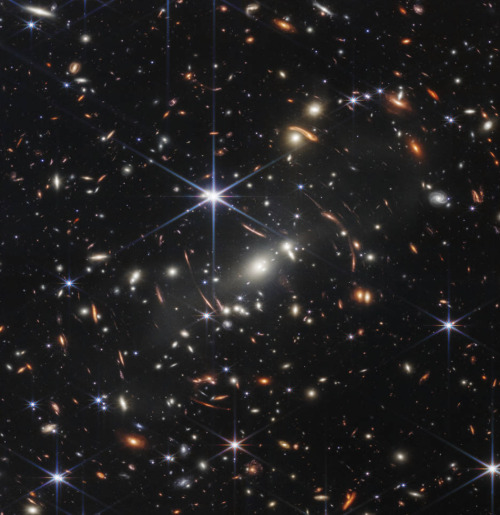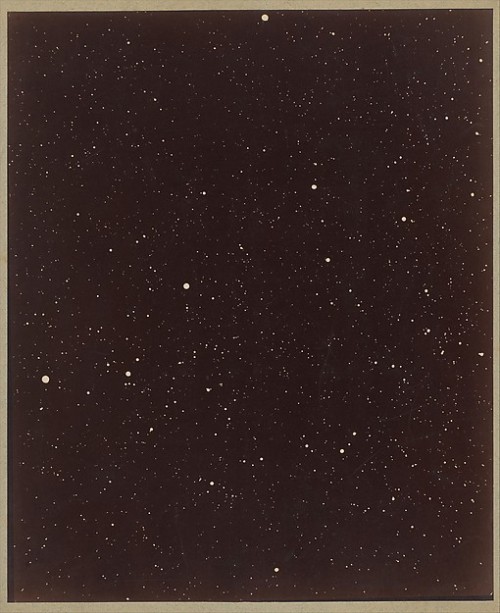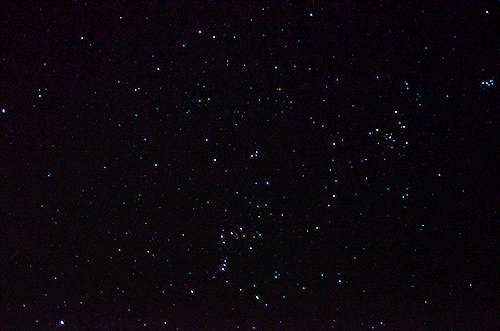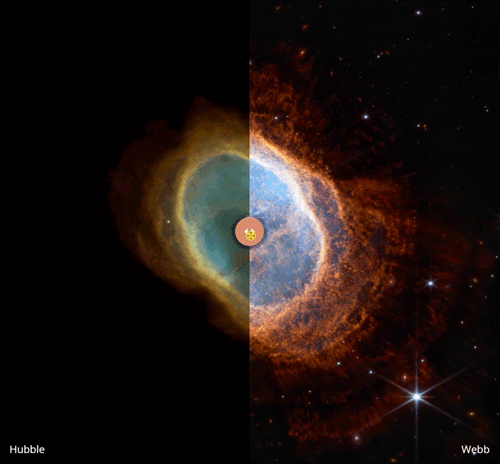Jones-Emberson 1 (PK164+31.1)
Jones-Emberson 1 (PK164+31.1)


More Posts from Starlost and Others
![Squidolus [Day:1328 Hour:0]](https://64.media.tumblr.com/e1e2548ae45d540f614877fcaa69f19a/7c4bc62f649b253f-eb/s500x750/8e5bf301df279cb641e8148de6b5817291fa98a5.png)
Squidolus [Day:1328 Hour:0]
It was a huge disappointment as a child to fall in love with the stars and then find out how much math it requires to get anywhere near them.

This first image from NASA’s James Webb Space Telescope is the deepest and sharpest infrared image of the distant universe to date. Known as Webb’s First Deep Field, this image of galaxy cluster SMACS 0723 is overflowing with detail. Thousands of galaxies – including the faintest objects ever observed in the infrared – have appeared in Webb’s view for the first time. This slice of the vast universe covers a patch of sky approximately the size of a grain of sand held at arm’s length by someone on the ground.
Your fave is problematic: Jupiter
could lose some weight. is ginormous. like HUGE. all planets of our solar system could fit inside with room to spare
is called a gas giant for a reason. super gassy. really really gassy. dude. stop.
(hydrogen and helium)
privacy nut: looks like a caramel candy but won’t show us his real surface. all we can see are his clouds and storms (terrible fucking storms let me tell you)
has a storm called “the red spot” that is several times larger than planet Earth
is thicc in all regards: his atmosphere is several hundreds of kilometres deep
probably doesn’t even have a real surface: the gas just slowly changes into liquid form.
liquid. metallic (!). hydrogen. get a load of that. YO. 10 000 degrees celsius. weird as shit!
possibly doesn’t have a core. Jupiter always needs special treatment
if he tried a little harder, he coulda been a star. get it together man. you just needed to be 75 times larger and you could’ve been a read dwarf. but no
way too hot. so fucking scorching hot that he’s still cooling 4 billion years after forming (gives away more heat than he receives)
rotating too fast for his own good: going so fast (rotates around itself in less than 10 hours) that he’s shaped like a squished ball
has 67 moons… could’ve gone for 69 but gave up too early. boo
summary: big ass bully with a gas problem

M2 9: Wings of a Butterfly Nebula : Are stars better appreciated for their art after they die? Actually, stars usually create their most artistic displays as they die. In the case of low-mass stars like our Sun and M2-9 pictured above, the stars transform themselves from normal stars to white dwarfs by casting off their outer gaseous envelopes. The expended gas frequently forms an impressive display called a planetary nebula that fades gradually over thousands of years. M2-9, a butterfly planetary nebula 2100 light-years away shown in representative colors, has wings that tell a strange but incomplete tale. In the center, two stars orbit inside a gaseous disk 10 times the orbit of Pluto. The expelled envelope of the dying star breaks out from the disk creating the bipolar appearance. Much remains unknown about the physical processes that cause planetary nebulae. via NASA
js





Super worm moon.
(March, 28, 2021)

Hubble Telescope image vs. James Webb Telescope
-
 twilitmoon liked this · 5 months ago
twilitmoon liked this · 5 months ago -
 starlost reblogged this · 6 months ago
starlost reblogged this · 6 months ago -
 caveforstuff liked this · 6 months ago
caveforstuff liked this · 6 months ago -
 ghosts0uls reblogged this · 7 months ago
ghosts0uls reblogged this · 7 months ago -
 astrophilenerd-corb liked this · 8 months ago
astrophilenerd-corb liked this · 8 months ago -
 slovenlyflower reblogged this · 8 months ago
slovenlyflower reblogged this · 8 months ago -
 slovenlyflower liked this · 8 months ago
slovenlyflower liked this · 8 months ago -
 itame84 liked this · 8 months ago
itame84 liked this · 8 months ago -
 wilderbear liked this · 8 months ago
wilderbear liked this · 8 months ago -
 junnidomingues liked this · 8 months ago
junnidomingues liked this · 8 months ago -
 subliminaldevestation liked this · 9 months ago
subliminaldevestation liked this · 9 months ago -
 diamondsforlife liked this · 9 months ago
diamondsforlife liked this · 9 months ago -
 been-here-since-76 liked this · 9 months ago
been-here-since-76 liked this · 9 months ago -
 quasarsperminute liked this · 9 months ago
quasarsperminute liked this · 9 months ago -
 weedswrites reblogged this · 9 months ago
weedswrites reblogged this · 9 months ago -
 thruxtonappleby liked this · 9 months ago
thruxtonappleby liked this · 9 months ago -
 jcshellyg liked this · 9 months ago
jcshellyg liked this · 9 months ago -
 khlorine69 liked this · 9 months ago
khlorine69 liked this · 9 months ago -
 badasswarriorprincess liked this · 9 months ago
badasswarriorprincess liked this · 9 months ago -
 sun-am liked this · 9 months ago
sun-am liked this · 9 months ago -
 lsd-l liked this · 9 months ago
lsd-l liked this · 9 months ago -
 innerbloooom reblogged this · 9 months ago
innerbloooom reblogged this · 9 months ago -
 saillysworld liked this · 9 months ago
saillysworld liked this · 9 months ago -
 neveraguardian liked this · 9 months ago
neveraguardian liked this · 9 months ago -
 hauntedmilkshakesoul liked this · 9 months ago
hauntedmilkshakesoul liked this · 9 months ago -
 breathetoseethetruth liked this · 9 months ago
breathetoseethetruth liked this · 9 months ago -
 surfando2017 liked this · 9 months ago
surfando2017 liked this · 9 months ago -
 minowly liked this · 9 months ago
minowly liked this · 9 months ago -
 spacevoyagerx liked this · 9 months ago
spacevoyagerx liked this · 9 months ago -
 rodrigocantarino reblogged this · 9 months ago
rodrigocantarino reblogged this · 9 months ago -
 rodrigocantarino liked this · 9 months ago
rodrigocantarino liked this · 9 months ago -
 melodiusfaux liked this · 9 months ago
melodiusfaux liked this · 9 months ago -
 1974lizard liked this · 9 months ago
1974lizard liked this · 9 months ago -
 m1nuscl liked this · 9 months ago
m1nuscl liked this · 9 months ago -
 vesselsbliss liked this · 9 months ago
vesselsbliss liked this · 9 months ago -
 maivquet liked this · 9 months ago
maivquet liked this · 9 months ago -
 anarrquista liked this · 9 months ago
anarrquista liked this · 9 months ago -
 solinvict-haroldhn0907 liked this · 9 months ago
solinvict-haroldhn0907 liked this · 9 months ago -
 forsakenzombie liked this · 9 months ago
forsakenzombie liked this · 9 months ago -
 txpuke liked this · 9 months ago
txpuke liked this · 9 months ago -
 pocketsedition liked this · 9 months ago
pocketsedition liked this · 9 months ago -
 bigunit01 reblogged this · 9 months ago
bigunit01 reblogged this · 9 months ago -
 bigunit01 liked this · 9 months ago
bigunit01 liked this · 9 months ago -
 stellartravelersworld liked this · 9 months ago
stellartravelersworld liked this · 9 months ago

andrei, he/him, 21, made this at 14 when i was a space nerd but i never fully grew out of that phase so,,,,..,hubble telescope + alien life + exoplanet + sci fi nerd
245 posts
